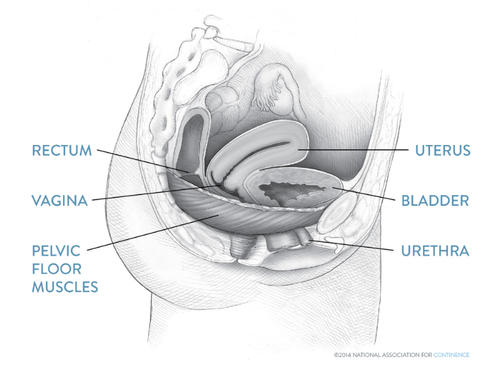Kegels or kegel exercises (also known as pelvic floor muscle exercises) are one of the best ways to improve and maintain bowel and bladder functions. Kegels can be done by both men and women to increase the strength of your pelvic floor and may help to improve or even eliminate bladder leakage.
WHO SHOULD DO KEGEL EXERCISES?
Kegel exercises are a great tool for many people, whether you’re wanting to reduce symptoms of urinary incontinence or you’re just looking to keep your pelvic floor healthy. Increasing the strength and tone of the pelvic floor can help relieve many symptoms, such as a bladder prolapse, bladder leakage, and urinary urgency. Kegels are often recommended for women or men whose pelvic floor requires better support. Kegel workouts, like any other strength training program, can help to tighten up the muscles and restore their natural role in pelvic organ support and pelvic stability.
A STEP BY STEP GUIDE FOR WOMEN ON HOW TO DO KEGEL EXERCISES
So, how do you know you are doing kegels properly? Like any exercise, it can be difficult to know at first. But with a daily commitment, it becomes instinctive. Here are a few tips for doing kegel exercises:
-
WHICH MUSCLES DO I USE FOR KEGEL EXERCISES?
If you can stop your urination flow mid-stream, you have identified your pelvic floor muscles. That’s the most difficult part of the exercise. (If you’re having problems identifying the correct muscles, stop and make an appointment with a pelvic floor PT.)
-
HOW MANY KEGELS A DAY?
Performing with an empty bladder, your first goal should be to tighten your pelvic floor muscles for 5 seconds. Then relax them for 5 seconds. Try to do 5 reps on your first day. As you gain confidence from your new routine, aim for 10 seconds at a time, relaxing for 10 seconds between contractions.
-
WORK BOTH YOUR FAST TWITCH AND SLOW TWITCH MUSCLE FIBERS
To give your pelvic floor a full workout, there are two types of focused kegel exercises you could perform.
-
Quick or Short Muscle Contractions (Fast Twitch Muscle Exercise) – The first exercise is called a quick or short contraction. It works the fast-twitch muscle fibers that respond quickly to compress the urethra and shut off the flow of urine to prevent leakage.
To perform these contractions, the muscles are quickly tightened, lifted up, held for 1-2 seconds, and then released back down. You should continue to breathe normally as you do these exercises.
-
Long Hold Muscle Contractions- This exercise works on the supportive strength and endurance of the slow-twitch muscle fibers and is referred to as a long hold contraction.
To perform these contractions, the same muscles you used with the quick contractions are now going to be gradually tightened, lifted up, and held over several seconds.
At first, it may be difficult to hold the contraction for more than 1 or 2 seconds. Ultimately, the goal is to hold the contraction for 10 seconds then rest for 10 seconds between each long contraction to avoid taxing the muscles.
-


